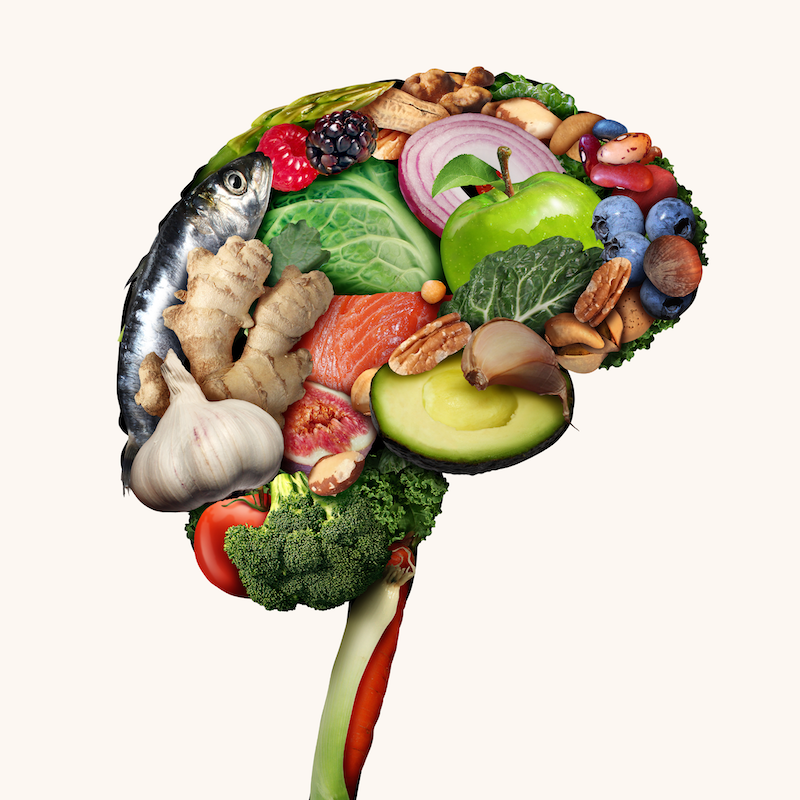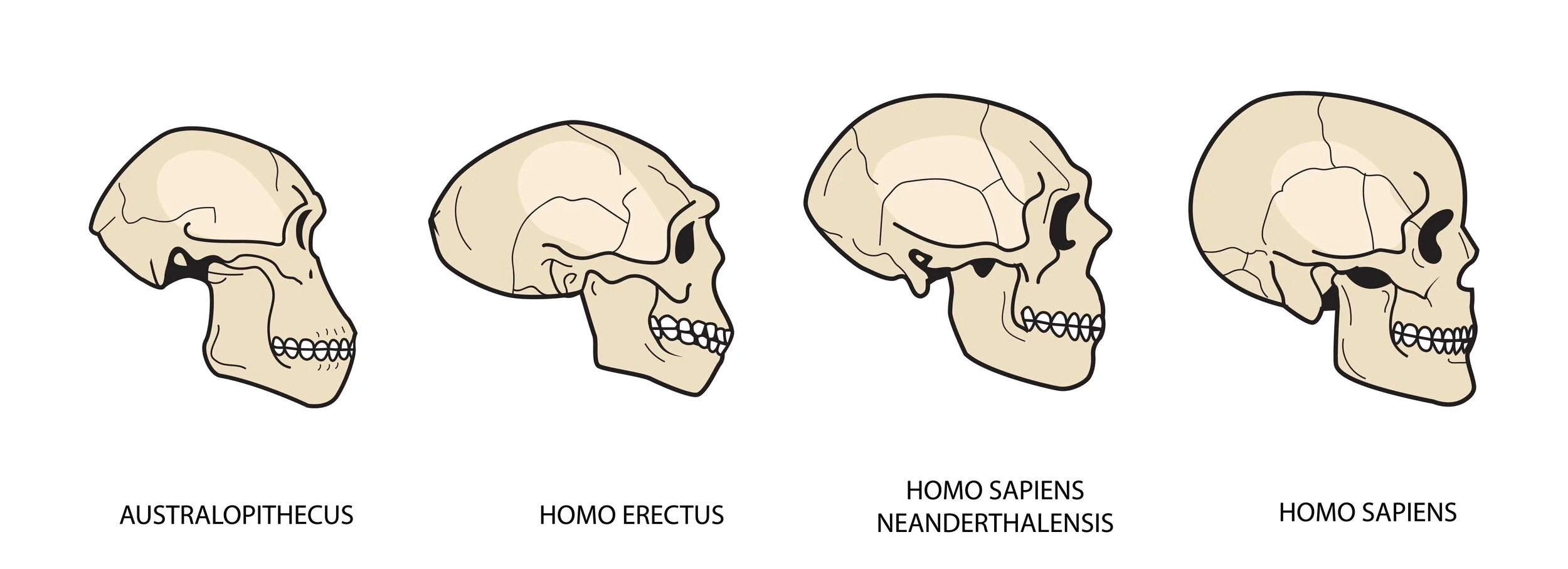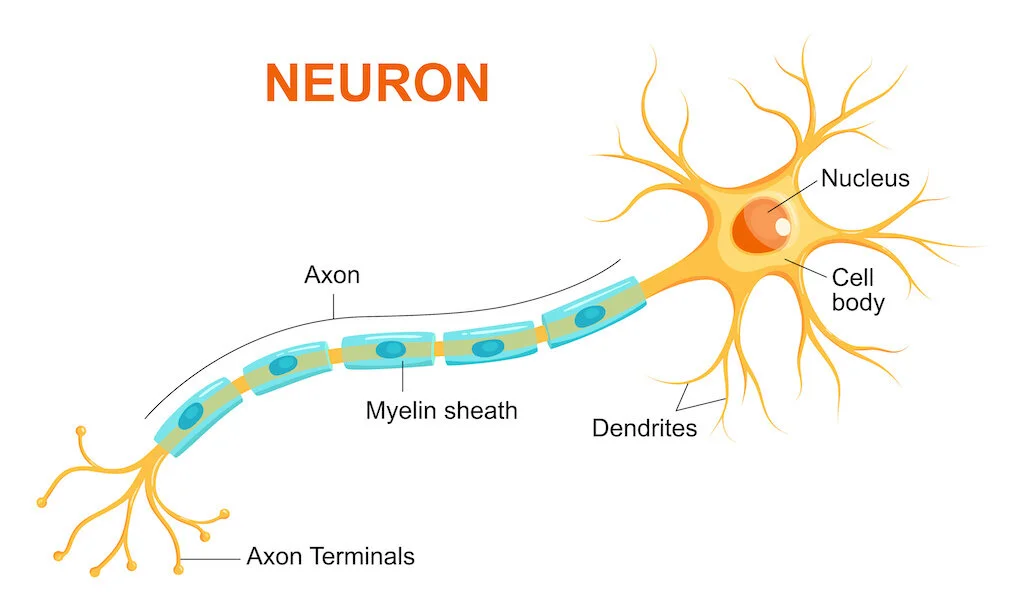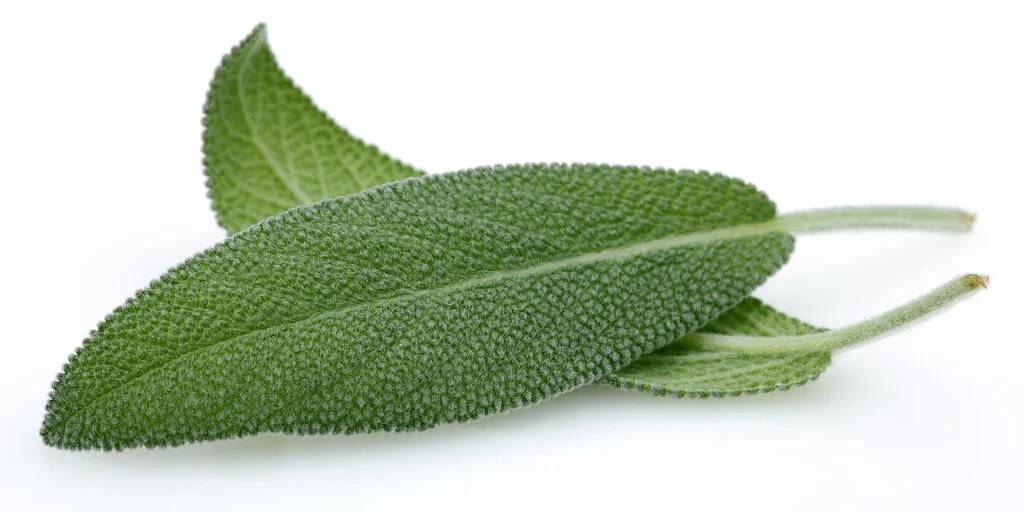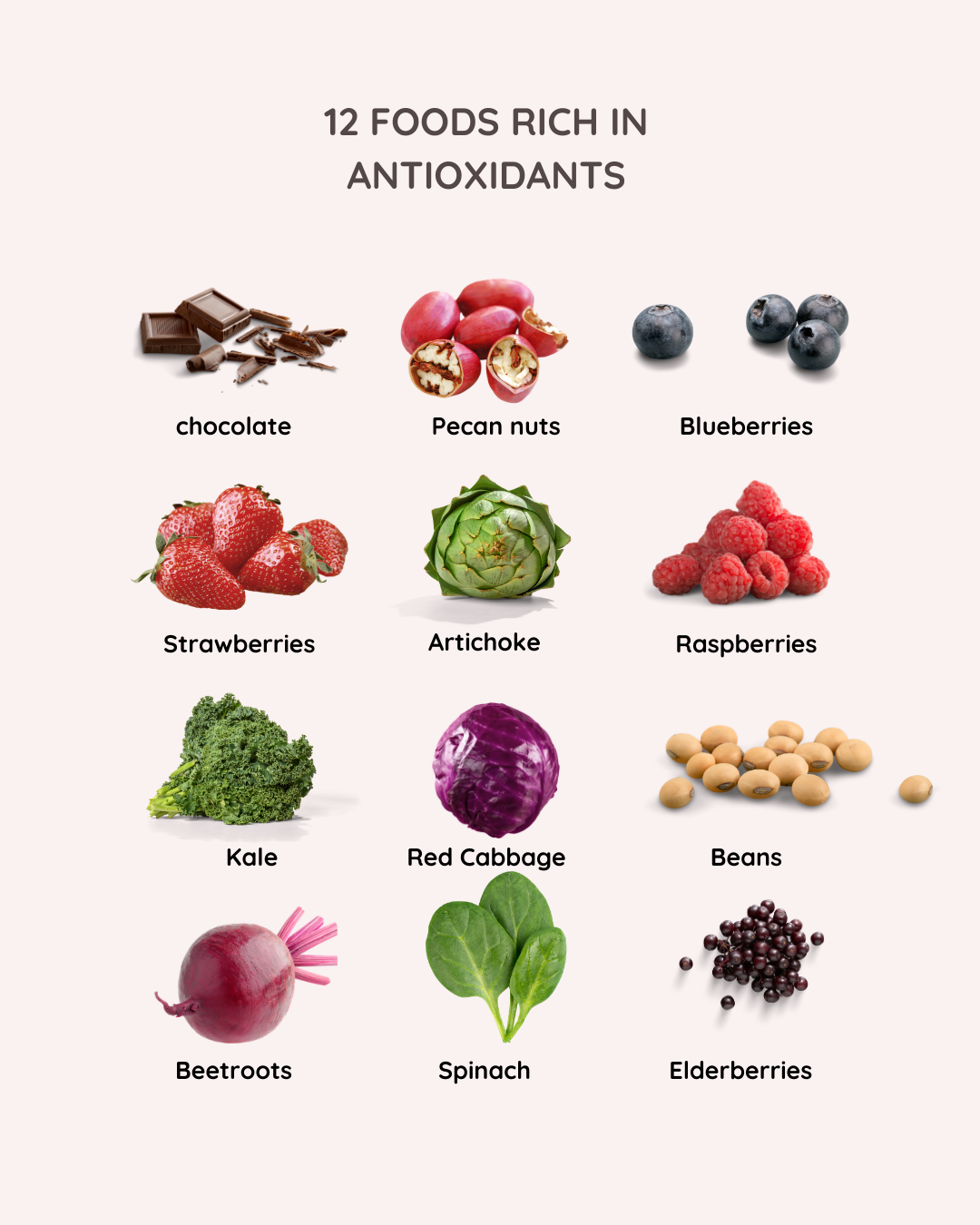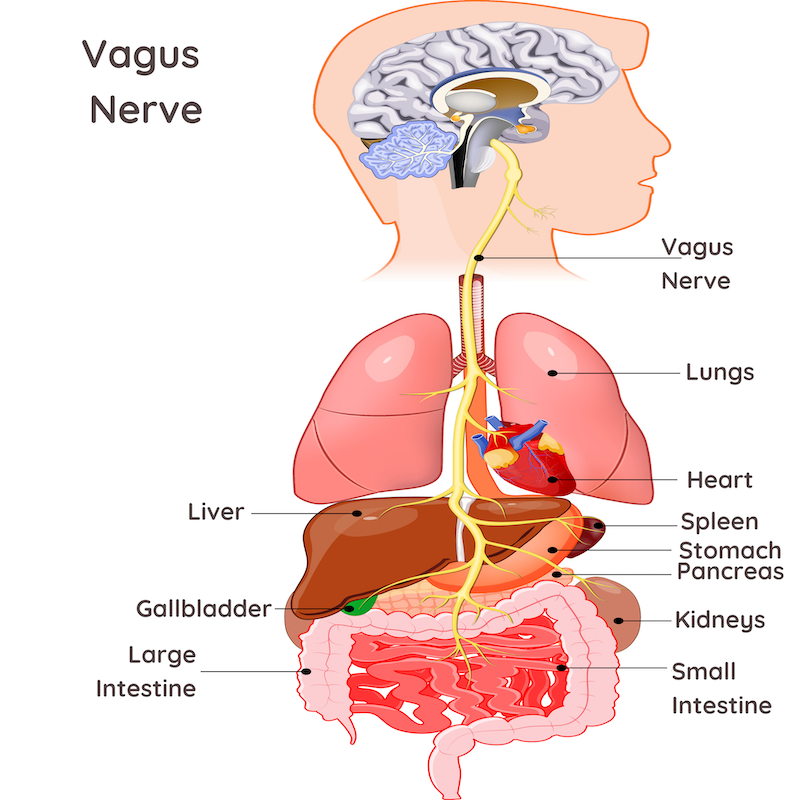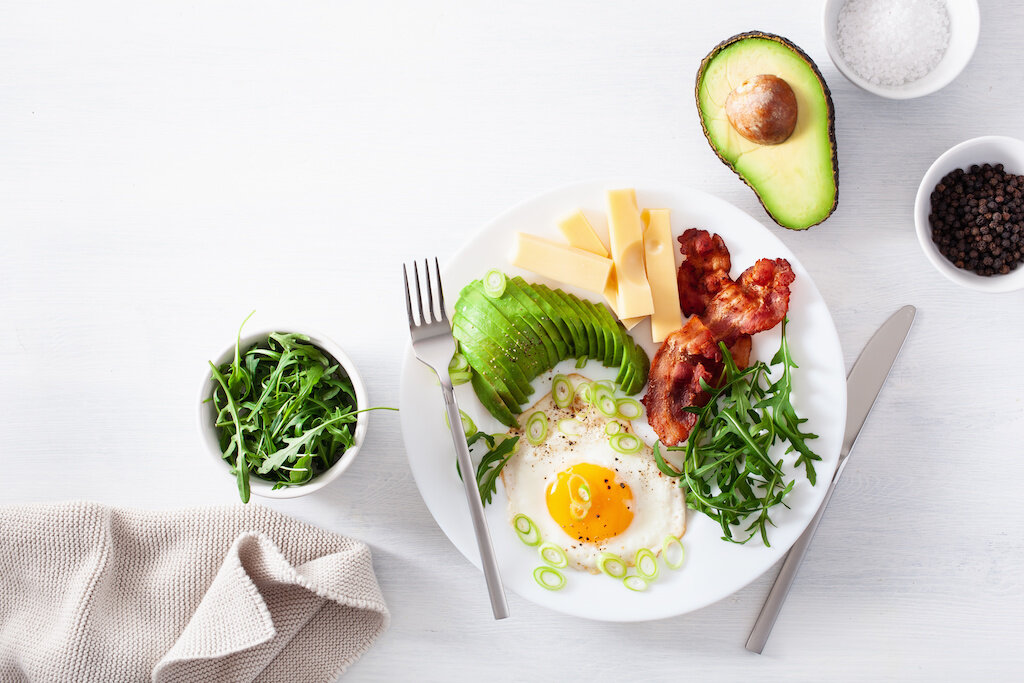The 9 Best Brain Diet Tips That'll Boost your Mood, Memory & Focus
This post contains affiliate links to products that I use myself or can recommend.
I have one brain, and I worship it.
I love being creative and learn new skills, both physically and mentally, and I want to be like that all my life.
I've long secretly analyzed older people who are smart, sharp, and talk with young, strong voices late into their 90s. And I've noticed some characteristics of these types. They are usually very active physically, they eat healthily, and they do some kind of mental work every day - like studying, writing, or creating stuff.
I've also studied a lot of literature and articles on brain anatomy, neurotransmitters, memory training, meditation, and diets. And for quite a while now, I've followed the guidelines in Dr. Lisa Mosconi's book "Brain Food" and have discovered on my own body how much diet affects mood, memory, and cognitive sharpness.
"Brain Food" is my primary source for this post. Lisa Mosconi is an expert in both neuroscience and nutrition.
Is It Possible to Stay Smart and Sharp All Your Life?
There's increasing evidence that a brain-healthy diet and lifestyle can build new brain cells and strengthen the connection between them, which is excellent for warding off cognitive decline and memory loss later in life.
Moreover, having a sharp and active mind can reduce your stress levels, help you recall information faster, and make you feel more engaged with life - all your life.
Whether you're 20 or 90, it's never too early or too late to start tending your neural forest and take simple steps to improve your brain function.
I've limited this post to the best diet guide that can recharge and upgrade your brain, mind, and mood, and help you be smart, sharp, and the best you, throughout your lifetime. You still have to add exercise for your brain and body, a satisfying social life, and to keep your stress level in check - but proper food for your brain is a vital step to a long life with a bright mind.
Oh... At the very bottom of this rant, you'll find a cheat sheet that'll make it easy to work all these food tips and ideas into your daily life.
You Are What You Eat
In your everyday life, the number one factor that you have control over in terms of your mental health and brainpower is at the end of your fork. Food is medicine and, indeed, brain fuel.
How Humans Evolved Supersize Brains
The answer to why diet is so paramount for our mental well-being lies in how the human brain evolved so differently from other mammals.
Humans have an enormous brain for an animal of our size.
Most of this difference reflects the expansion of the parts of the human brain specializing in sophisticated cognitive functions such as language, self-awareness, and problem-solving. Skills that also afforded us the development of tool making, symbolic thinking, and socialization – all talents that make us human, while at the same time allowing us to take better care of ourselves.
The Monkey Brain
In the beginning, there was nothing special about humans.
The first two-thirds of human history, the size of our ancestors' brains, was within the range of some apes living today – about 400 – 500 cc. At this stage, early humans consumed a diet similar to that of the modern ape.
Grasses, seeds and sedges, fruits, roots bulbs, tubers – even tree bark were the most likely sources of nutrition for our ancestors. Their massive jaws, robust faces, and large molars lent themselves to the slow, thorough chewing necessary to assimilate these foods.
The Homo Erectus Diet
Homo erectus would never have made his debut 1.8 million years ago sporting a notable 1000 cc brain had our ancestors been satisfied with a low-calorie content diet of stem and flowers.
Because the brain uses more energy than any other human organ, accounting for up to 20 percent of the body's total haul, Homo Erectus needed loads of energy-rich food, like meat protein, to fuel energy needs.
Paleontologists have been able to reconstruct the evolution of our predecessors' diet with remarkable accuracy and detail.
It might come as a surprise that though meat might have been a highly valued food, it was a rare and dangerous one to obtain.
Rather, Mr. & Mrs. Erectus participated in "confrontational scavenging" by letting other animals make the killing and then chase them away to take the carcass.
But early humans also lived in proximity to water, as fresh drinking water is indeed the single most crucial resource for the human body. Hence, throughout history, we've done our best to set up civilization within easy reach of water, because the bonus of living next to rivers and lakes is that other animals also live by them – and in them.
With its extended fluvial networks and luxuriant vegetation, the East African Rift Valley has probably been the exceptional ecological niche that spurred the brain's expansion by providing energy-dense "brain food." These lands were a rich source of shallow and low-water aquatic species, supplying snails, crabs, mollusks, sea urchins, small fish, fish roe, and spawn amphibians, and reptiles. Should the day's catch go awry, there were always insects, worms, or the seasonal bird eggs. Moreover, these areas had an almost limitless abundance of plants, fruits, vegetables, weeds, and early humans even enjoyed carbs like oats and wild wheat.
What makes this habitat particularly suitable for brain development is that these foods required little skill to fetch and consume. That favored the less coordinated skills of a smaller brain while also containing plenty of the perfect nutritional content needed to promote brain growth: Omega3, proteins, vitamins, minerals, brain-friendly sugars, and, last but not least, choline. Choline is a substance used by the brain to memorize information and learn from experience.
About 65% of the food came from plant-based gathering, and 35% derived from hunting.
Little by little, as the brain grew larger, man grew taller. At the same time, eye-hand coordination improved, and planning skills became more sophisticated.
The Big Brain Leap – Cooking!
The next big brain leap accelerated significantly in the last 500,000 years, gifting Homo sapiens and the Neanderthals with brains roughly the same size as our modern-day brains (1300-1500 cc).
That might very well have happened as a result of our developing food preparation skills.
Pounding and heating food renders the nutrients easier to digest and absorb. Cooking produces soft, energy-rich foods, which means less time spent chewing and digesting while preserving calorie content, which left more energy and time to focus on other activities – like growing bigger brains.
Because of more animal food and culinary skills, Homo sapiens teeth, jaws, and gut got progressively smaller while heads got bigger. As a result, our gastrointestinal tract has a larger stomach and shorter colon than that of purely herbivorous animals, though not as short as carnivores, making humans able to extract plenty of nutrients from both animal and plant food.
Then Human Brains Started Shrinking Again...
Every day now, you can read about the worldwide increase in dementia, Parkinson's Disease, multiple sclerosis, depression, autism, ADHD, and other neurological and mental health disorders.
The number of people living with Alzheimer's in the US (2019) is estimated at 5,8 million, and the number is predicted to reach 15 million by 2050.
Alzheimer's is one of the few neurological diseases where scientists agree that diet influences the development of the disease and that the progression of the disease occurs gradually in the brain over twenty to forty years before clinical symptoms emerge. In other words, cognitive impairment is not a mere consequence of old age, but rather represents the endgame of years of accumulated insults to the brain.
The Industrialization of Food
Our ancestors mostly ate vegetables, fruits, nuts, and seeds, where many people in the industrialized world today barely touch these foods. When they do, it's rarely in their natural state but somewhat canned, frozen, juiced, or otherwise chemically processed, and usually eaten as a side dish or snack rather than the main course.
Whereas carbs used to come from fresh, seasonal fruits and vegetables (and sometimes honey), we now access them from processed grains, cereal, and refined sugar products.
Instead of getting high-quality protein and brain-friendly fat from wild fish and animals, we eat domesticated chickens, cows, and pigs.
Worse still, we have relegated our fat consumption to processed baked goods, dairy products, adultered butter, and vegetable fats and oils like minarine, grape seed oil, sunflower oil, corn oil, canola oil. These fats are oxidized and cause inflammation and mutation in cells and include precisely the opposite proportions of unhealthy to healthy fats.
How to Eat Yourself Smart and Happy
- 9 best brain foods that'll boost your brain, thoughts & mood
Research shows that certain foods can improve overall brain health and certain types of mood disorders.
The human brain requires more than 45 nutrients to be at its best, divided into six major groups: proteins, carbohydrates, fats, vitamins, minerals, and - water.
And if you're a woman, get plenty of plant estrogens, because 70% of people with Alzheimer's are women. More about that at tip 7.
1. Drink Water - Think Faster
The brain is more than 80% water, which is quite a lot for such an active organ, so it's obviously very thirsty. To compare, our bodies are about 60% water.
Water is so vital as it's involved in every chemical reaction occurring in the brain. It's essential for our intelligence, it fills the spaces between brain cells, helps form proteins, absorbs nutrients, eliminates waste, and it's indispensable for energy production because it carries oxygen.
Further: Drinking water increases your reaction time and makes you think faster. Also, aging alters thirst and drinking responses, making older people more vulnerable to fluid imbalances in their brains. Dehydration can accelerate the brain shrinkage that occurs with aging and dementia. But the effects of dehydration can be fully reversed in a few days by simply drinking more water.
How to Drink to Supercharge Your Brain
Make a point of drinking eight 8-ounces of water a day, or close to 2 liters (2 quarts). If you live in a warm climate or are an athlete, you'll need more. To keep your mind sharp and focused, start your day by drinking a glass of water in the morning and end it with a cup of herbal tea.
Top 7 brain fluids:
Plain clean water.
Unsweetened coconut water is nature's thirst quencher. It's low in sugar while providing you with the potassium you're looking for.
Fruit-infused water = water + nutrients. See graphic 👉🏻
Herbal teas = water + nutrients. My favorite night tea at the moment is nettle or oat straw.
Aloe Vera Juice is a natural antibacterial, anti-viral, and anti-fungal + over 200 active components from vitamins and minerals to amino acids, enzymes, and fatty acids.
Noni juice is rich in antioxidants from anthocyanins and flavonoids to beta-carotene, lutein, lycopene, and selenium. Much needed anti-aging nutrients to prevent cell damage and reduce inflammation.
Pomegranate juice delivers a unique and powerful collection of tannins, anthocyanins, and unsaturated fatty acids.
To help you stay hydrated while getting healthful nutrients too, you can substitute up to 20% of your daily water intake from these top water-rich foods: Watermelon, strawberries, grapefruit, cantaloupe, peaches, cucumber, lettuce, zucchini, radishes, celery.
2. The Good Brain Fats - for Structure, Flow, and Protection
The brain consists of about 11% fat (and NOT 60% as most google searches will tell you).
The fat in the brain is different from most body fat.
Your body likes to store fat because fat is the body's most concentrated source of energy, so it makes good sense for the body to have some "meat on the bones" for times of famine. The brain, on the other hand, does not contain that sort of fat at all. There's no storage fat in the brain.
Brain fat is al structural fat - not energy fat - but it's as essential to life as storage fat is to fuel our bodies. The brain uses fat to structure our cells and as a sort of padding.
Brain cells are wrapped in a fatty sheath called myelin, which provides insulation for the electrical impulses traveling to and from the brain. And delicate fatty membranes enclose the neurons, which protect them from external insult and allow signals and nutrients to flow in and out of the cell. These membranes are made of fats like omega-3s and phospholipids.
The only fats we need to feed our brains are the building blocks that support its structural health, and that's the PUFAs - polyunsaturated fats. And these fats are crucial to brain health.mThese fatty acids are in such immediate demand that the brain consumes them accordingly as soon as they arrive.
The Best PUFA's for Brain Health are the Omega-3s And Omega-6s
Omega-6 mount an inflammatory response in case of a wound or infection. Omega-3 turns down this response once the danger is over, i.e., anti-inflammatory. The balance of these two PUFA's is crucial for proper neuron communication, and a means to maintain a healthy immune system. A disruption of this balance can lead to sustained inflammation, and in the long run, a reduced capacity to fight off disease.
The omega-6/omega-3 balance directly depends on your food choices.
Anthropological research suggests that our hunter-gatherer ancestors consumed omega-6 and omega-3 fats in a ratio of roughly 1:1.
However, the onset of the industrial revolution (about 140 years ago), the consumption of omega-6s increased at the expense of omega-3s. This change was due to both the advent of the modern vegetable oil industry and the increased use of cereal grains as feed for domestic livestock (which in turn altered the fatty acid profile of meat that humans consumed).
Some estimates that Americans today consume 20 or 30 times more omega-6s than omega-3s. You only need very little omega-6; a few drops of grapeseed oil or a handful of peanuts are all your brain needs for the day.
Omega-6 rich foods to reduce:
Grapeseed oil, sunflower oil, canola oil, wheat germ oil, corn oil, soybean oil, sesame oil, mayonnaise, peanut oil.
How to Get the Right Omega-6 and Omega-3 Balance
Research has determined that a ratio of 2-1 is an ideal balance to shoot for, which is twice the amount of omega-6 to omega-3. You find these fatty acids in oils from plant and marine sources, especially fatty fish like salmon, algae, and some nuts and seeds.
Omega-3 rich foods:
There are three major types of omega-3's that you need to know a little about: ALA, EPA, and DHA.
DHA:
DHA (Docosahexaenoic acid) is vital for brain function and brain development in childhood and accounts for 97% of the omega-3 fatty acids found in the brain and 25% of the brain's total fat content.
Having adequate levels of DHA makes it easier and more efficient for nerve cells to communicate.
Early-life DHA deficiency is associated with problems later on, such as learning disabilities, ADHD, and aggressive hostility.
DHA is the number one nutrient to fight age-related cognitive decline, dementia, and Alzheimer's.
DHA may also help protect against depression.
EPA:
EPA (Eicosapentaenoic acid) is the most important of the omega-3 fatty acids to reduce cellular inflammation.
It helps your body during strenuous exercise.
It's essential in promoting positive emotions and good mood.
ALA:
ALA (Alpha-linolenic acid) is the most common omega-3 fatty acid in your diet. The catch is that the body must convert it into DHA and EPA to utilize it, and 75% of ALA is lost in the process.
The body stores the not converted ALA or uses it as energy like other fats.
For the most part, you get ALA from plants, and EPA and DHA primarily found in animal foods like fatty fish and caviar.
A Word on Saturated Fats
Saturated fats are solid at room temperature, and you find them in animal fat, milk, cheese, and butter, as well as tropical oils like coconut and palm oil.
The brain only needs saturated fat through diet while it's growing new brain cells, which is from infancy to adolescence. Hereafter the brain shuts its "saturated fat gates" down. Only with a few exceptions can saturated fat enter, and that's butyric acid found in whole milk and myristic acid found in coconut oil.
The brain can make as much saturated fat as it needs locally, and as such, doesn't need restocking.
You can learn more about fats in my post about the Keto diet.
3. Proteins - the Building Blocks of Your Neurotransmitters
One source is the creator of our neurotransmitters: Food.
There are 86,000,000,000 neurons in the brain, and they all communicate predominantly by transmitting various chemical signaling substances called neurotransmitters.
Neurotransmitters are responsible for how you think, talk, eat, dream, and remember.They spur the impulses that wake you up, make you sleepy, keep you focused, and even cause you to change your mind.
Neurotransmitters are not sitting around waiting to shuttle their next signal. You produce them when there's a need to carry one of the brain's various messages. They report for duty when a message presents itself and disappear again once their mission is complete.
This sophisticated process is intrinsically dependent on several nutrients extracted from the foods we eat every day.
Proteins are complex molecules that do most of the work in our cells, and we need them for the structure, function, and regulation of the brain's networks. They consist of smaller units called amino acids.
Amino acids are essential for just about every function that takes place within the body and brain. And many of these nutrients act as neurotransmitters.
Serotonin - I Matter
The neurotransmitter serotonin creates a sense of being satiated, content, and optimistic. When we have enough serotonin, we are creative, focused, aware, have a balanced appetite, and able to make rational decisions. Furthermore, serotonin modulates sexual drive, self-confidence, body temperature, sleep, noise, and photosensitivity.
When the brain produces low levels of serotonin, happy signals become much less frequent and short-lived, which can cause depression, anxiety, plus sleep and eating dysfunctions - especially if you grew up in alcoholic or chaotic family systems.
Serotonin can not cross the blood-brain barrier, so the production of serotonin in the brain relies on the amino acid L-tryptophan, which you need to get throug food.
According to current dietary guidelines, the average adult needs 5mg tryptophan per kilogram body weight. So, if you weigh 175 pounds / 79 kg, you should swallow 395mg tryptophan daily to keep your brain happy.
There is a catch, though, as tryptophan generally takes a backseat to other amino acids in terms of how often and how easily it is absorbed by the brain, which means that the brain only uses less than 10 % of the tryptophan we consume to make serotonin. According to Lisa Mosconi plant-based sources are among the most useful natural sources of tryptophan.
(Note that you also need vitamin-B6 to convert tryptophan into serotonin, and chronic stress depletes your levels of vitamin B6. More about this "brain vitamin" below).
These top 10 foods provide the best indication of tryptophan availability for transport across the blood-brain barrier for serotonin production:
1. Chia seeds
2. Sesame seeds
3. Whole plain yogurt
4. Pumpkin seeds
5. Prunes
These foods are also excellent sources:
Eggs (cage-free)
Wild-caught fish like cod and salmon
Poultry (pasture-raised)
Organic raw cottage cheese or cheeses
Cashews and walnuts
Beef or Lamb (grass-fed)
Oats (100 percent whole grain)
Brown rice, corn or quinoa
Beans/legumes, including chickpeas and green peas
Potatoes
Bananas
Dopamine - I Can Do It
Dopamine is the good feeling you get when a reward is at hand. Dopamine makes us desire, long for, aspire, seek, and search. It increases our general incitement level, our desire to eat, our perseverance, and our curiosity on ideas, and it's the engine that makes us search for information.
Without dopamine, we would have no motivation - at all. It impacts movement too.
Dopamine abnormalities are involved in several medical conditions, including Parkinson's disease, attention deficit hyperactivity disorder (ADHD), schizophrenia, and drug addiction.
The brain can manufacture this neurotransmitter by breaking down the amino acid Tyrosine. The body can produce Tyrosine but needs another amino acid called phenylalanine to do that. And you can only get phenylalanine through diet.
The recommended daily dose of phenylalanine and Tyrosine is 33mg per kilogram body-weight. That is 2.6 grams per day for a 175-pound (79kg) adult.
Also… gut microbes influence how we digest and metabolize the precursors of serotonin and dopamine. See tip 6👇🏻
Glutamate - Your Go Or Stop Button
Glutamate is an amino acid, AND glutamate is also the most abundant neurotransmitter in the brain and central nervous system.
Glutamate is your primary excitatory neurotransmitter. Excitatory neurotransmitters increase the likelihood that a nerve impulse will fire - makes you initiate an action.
Of all the neurotransmitters, glutamate is considered the most critical for healthy brain function. Glutamate enhances neuroplasticity — the brain's capacity to change and grow — to help you learn, remember, and perform other cognitive functions. Glutamate is critical for human brain development, so there are high concentrations of it in human breast milk.
You really can't discuss glutamate without mentioning GABA (gamma-aminobutyric acid), another abundant neurotransmitter.
GABA is your primary inhibitory neurotransmitter. Inhibitory neurotransmitters decrease the likelihood that a nerve impulse will fire (inhibits action).
Glutamate and GABA are integrally related in both form and function. They have a complex, homeostatic relationship that brings balance to the level of brain activity. GABA inhibits brain activity typically, enabling you to relax.
When you're low in GABA, your mind gets stuck in the "on" position, and you'll find yourself anxious, overstimulated, and overwhelmed.
Much as the accelerator and brakes in your car work together to control speed,
GABA puts the brakes on brain activity to counter glutamate's accelerative effects. Your ability to initiate an action, refrain from doing something, and form long-term memories depends on the amino acid glutamate.
Glutamate is a non-essential amino acid, which means that the brain is capable of making it on its own. However, the brain does need glucose to be able to make it.
MORE: How to Use Cravings to Reach Your Goal
4. Glucose - Sugar But Not Sugar
While the body can use both fat and sugar for energy, the brain relies solely on glucose.
There's a never-ending 24/7 influx of glucose inside the brain. Since its work is so demanding, glucose is expended at such a rapid-fire rate; it merely doesn't have time to slow down and accumulate in tissues.
The glucose that the brain doesn't use immediately, it converts into a substance called glycogen. Glycogen is a brain energy reserve that will keep you going between meals. That reserve will last about a day.
The brain runs best on pure glucose, but it can convert other sugars like fructose (from fruit and honey) and lactose (from dairy) into glucose whenever glucose runs low. And when carbohydrate supply runs below 50 g/day, the brain turns to the liver to start burning adipose fat and produces ketone bodies as backup energy.
Your brain needs about 62 grams of pure glucose over 24 hours. Some need a bit more, some less. It has to be glucose, though.
Glucose comes from carbs. But as we know, there're the good and the bad carbs. Your brain has a sweet tooth but doesn't want sweets.
3 tbsp of raw honey will give your brain all the glucose it needs for the day. As a comparison, you'd need to eat 16 pounds of chocolate chip cookies to achieve the same goal.
Eating too much sugar, especially the refined white sugar, regularly affects the hippocampus — a vital memory center and leads to brain inflammation and accelerated free radical production, making it very hard to remember at all. Chronic high blood sugar levels cause inflammation, insulin resistance, metabolic disorders, and type 2 diabetes - which in turn, raise one's risk of dementia.
In terms of brain activity, carbs that metabolize quickly into sugar and contain very little fiber are the worst you can eat.
Focus on low-glycemic/high-fiber foods as the primary source of carbs in your diet and indulge in high-glycemic foods only in small amounts and infrequently to make your brain happy.
Complex carbs and starches are more fibrous and hard for your body to break down, and the slower breakdown results in less blood sugar spike.
Sweet potatoes, fiber-rich fruits like berries and grapefruit, and vegetables such as pumpkin, butternut squash, and carrots are all excellent lower glycemic foods. Other choices, such as legumes and whole grains, also provide you with more stable sugar levels while delivering good brain-essential glucose.
5. Brain Vitamins & Minerals
Vitamins play an essential role in our brain's activity, growth, and vitality.
Note that some brain-essential vitamins are water-soluble. Your body doesn't keep a store of water-soluble vitamins, so you need to get them from your diet every day.
Water-soluble brain-essential vitamins: Vitamin C, Vitamin B12, Vitamin B6, Vitamin B9, and choline.
Vitamin B6
The brain wouldn't be able to produce neurotransmitters such as serotonin, dopamine, or GABA without vitamin B6, so keep your B6 front and center and get it from your diet every day. Fortunately, vitamin-B6 is widely available in many natural foods, so it's easy to cover your body's daily needs.
However, your body also uses vitamin B6 to synthesize the stress hormones epinephrine and norepinephrine. So, when you're stressed, you have less B6 available to perform all the other functions. In that case, supplementation can come in handy.
Foods rich in B6: Turkey breast, grass-fed beef, pistachios, tuna, pinto beans, avocado, chicken breast, blackstrap molasses, sunflower seeds, sesame seeds.
Vitamin-B9
Folates, also known as versions of vitamin B9, are necessary for making DNA, neurotransmitters, cellular detoxification, and the proper formation of the nervous system during development.
Foods rich in B9: Dark green leafy vegetables (turnip greens, spinach, romaine lettuce, asparagus, brussels sprouts, broccoli), beans, peanuts, sunflower seeds, fresh fruits, fruit juices, whole grains, liver, seafood.
Vitamin-B12
Vitamin-B12 is a crucial B vitamin. Your body needs it for nerve tissue health, brain function, and the production of red blood cells. You need B12 to form memories, to focus, and to concentrate.
Low B12 levels are associated with depression.
Foods rich in B12: Beef liver, sardines, mackerel, Lamb, wild-caught salmon, nutritional yeast, feta cheese, grass-fed beef, cottage cheese, eggs.
Choline - The Super Brain Vitamin
Choline is neither a vitamin nor a mineral. However, it is often grouped with the vitamin B complex due to its similarities.
It impacts healthy brain development, muscle movement, your nervous system, metabolism, and liver function.
The brain depends on choline to manufacture the neurotransmitter acetylcholine. Acetylcholine is one of the primary brain neurotransmitters, as it is crucial for memory and learning, as well as arousal and reward.
People with Alzheimer’s disease have lower levels of choline acetyltransferase (ChAT) the enzyme that converts choline into acetylcholine in the brain.
Clinical studies show that choline consumption during pregnancy is necessary for cognitive capability of offspring throughout life. Higher levels of dietary choline intake during the first and second trimesters of pregnancy resulted in better performance on visual memory tasks in children at 7 years of age, a team of Harvard researchers has found.
In a recent study of 324 Swedish adolescents, those with the highest plasma choline levels achieved higher grades on school tests than those with lower blood levels of the nutrient. Other studies suggest that adequacy of choline during early development may play a role in preventing memory decline later in life.
How much choline you need daily:
You need adequate amounts of choline for optimal health. Your body makes about 10% of the choline it needs, but you have to get the rest (90%) from your diet to avoid a deficiency.
There is not enough evidence, so a Reference Daily Intake (RDI) for choline has not been determined. However, the Institute of Medicine has set a value for an adequate intake (AI).
If you are an adult woman, you need at least 425mg daily, while men need about 550mg daily.
Sage. Various species of sage can inhibit the breakdown of acetylcholine and improve cognitive function.
Sage can also influence neurotrophins such as brain-derived neurotrophic factor (BDNF), which is important for keeping neurons healthy and getting new neural connections to develop.
Sage is a favorite cooking seasoning, such as on chicken or in stuffing. But you also can enjoy it as a tea, add it to your smoothie or veggie juice (source)
Vitamin A & E
Both these vitamins have antioxidant functions that protect brain cells and tissues from harmful effects of toxins, free radicals, and even pollution.
Vitamin E also increases the delivery and absorption of oxygen into brain tissue, which is essential for optimal function and metabolic activity.
Vitamin A and E are fat-soluble, which means that the body can store it in the fat and bodily tissues, and therefore you don't need to replenish continuously. Get these vitamins through your diet to avoid
Foods rich in A: Butternut squash, sweet potato, kale, carrots, spinach, dried apricots, broccoli, butter, egg yolks. Other healthy vitamin-A foods include cod liver oil, red bell peppers, mangos, mangosteen, tomatoes, cantaloupe, green peas, papaya, peaches.
Foods rich in E: Olive oil, sunflower seeds (organic), almonds, hazelnuts, red peppers, spinach, avocados, turnip greens, butternut squash, pine nuts, mangos, sweet potatoes, tomatoes.
Antioxidants
Oxidation is the decaying process that occurs when cells metabolize oxygen. An apple turning brown, steel turning rusty and skin showing sun damage and pigmentation are all signs of oxidation.
While oxidation is natural and vital to cell turnover, 1% to 2% of cells get damaged in the process and turn into free radicals. Free radicals are unstable molecular particles and can trigger a cascade of molecular instability.
When free radicals accumulate, they may cause a state known as oxidative stress.
In the brain, oxidation happens whenever our brain cells burn glucose and oxygen to produce energy - which happens continuously. Generally, our brains manage to counterbalance this ongoing oxidation, but sometimes things get out of hand, and the amount of oxidation exceeds our brain's ability to keep it in check. Of all bodily organs, the brain is the one that suffers most from oxidative stress. Free radicals incessantly develop, thought by thought, making their way through our neurons like little tornados. The more free radicals your brain contains, the more damage done.
Luckily, you can minimize the damage and support the body's clearing up system through diet.
First up is loading up with antioxidants! Aim for various fruits and vegetables with the deepest, darkest colors of green, blue, red, and purple - especially berries and dark green veggies are excellent sources
Magnesium
If you fall prey to frequent symptoms of brain fog, you may be deficient in magnesium. Over 300 enzymes require magnesium to perform biological reactions essential to tissue and organ function. Magnesium supports optimal cognitive health by maximizing the various intricate functions of the brain.
Chronic stress depletes magnesium and so keeping stress levels under control and increasing your intake of magnesium improves brain health and cognitive processing speed.
Critical for age-related memory loss, magnesium is associated with memory potential. Studies show that low levels of brain magnesium directly correlate to poor memory function.
6. Probiotics - Natures Mood Stabilizers
A healthy gut is crucial to a healthy brain.
Recent studies have revealed that alterations in gut microbes can influence the risk of brain disorders like schizophrenia, autism, anxiety, depression, and dementia.
Gut microbes influence how we digest and metabolize the precursors of essential neurotransmitters like serotonin and dopamine. Our gut flora even has a direct line of communication to the brain, through the vagus nerve, which has receptors near the gut lining that allow it to keep a check on our digestion.
Microbes in the intestine can release chemical messengers that alter the vagus nerve's signaling – and, as a consequence, the brain's activity. In the gut, there's a lot of opportunities for the bacteria to communicate with the host systems – including the nervous system. It's a very dynamic, interactive, and abundant space.
These pathways are not one-way streets, so brain activity can also influence the gut flora composition.
Stress can itself increase inflammation, for instance, which can then affect the microbes in our gut, and the result can be a kind of feedback loop.
In a study, 36 healthy women were divided into three groups. One had a cup of probiotic yogurt twice a day for a month, a group ate yogurt with no probiotics in, and a control group that didn't eat any yogurt. The women were then shown upsetting pictures of people with angry, sad, or frightened facial expressions to gauge their emotional responses while being monitored with functional MRI (fMRI). FMRI is a technique to give a snapshot of the brain regions that get activated (or not) in response to different stimulation forms.
It turned out that there were significant differences in the way yogurt eaters and non-yogurt eaters reacted to this test. The former showed a more moderate response in the face of negative emotional stimulation than the latter.
Perhaps try yogurt or sauerkraut next time you have the blues. Fermented foods like yogurt, kefir, kombucha, and sauerkraut are a delicious and great way to enhance your gut bacteria, brain, and mood.
MORE: Why The Secret to Your Health and Happines Is In Your Micobiome
7. Plant Estrogens
Listen up, ladies (and men).
The brain contains a wide range of estrogen receptors and requires this hormone to regulate different processes such as cognition, memory, anxiety, body temperature, feeding, and sexual behavior.
During menopause, estrogen dramatically decreases, and estrogen is also a neuroprotective hormone. If a woman is somehow predisposed to Alzheimer's, that's when the risk manifests itself in her brain. New research suggests that the reduced concentration estrogen after menopause may be responsible for the higher prevalence and greater severity of Alzheimer's in women than men.
However, studies show that memory functions in all gender and age groups benefit from eating organic phytoestrogens.
Phytoestrogens are plant-based compounds that bind to estrogen receptors. They only have about 1/1000th of the effect on the body as real or chemical estrogen, but they help balance your body's estrogen level and keep xenoestrogens from exerting its effect.
Lignans and isoflavones are the primary phytoestrogens. In addition to binding with estrogen receptors, they can increase your Sex Hormone Binding Globulin (SHBG) levels, which protect the body by binding to estrogen, decrease aromatase, which prevents testosterone turning into estrogen, and help the body with eliminating too much estrogen.
The best phytoestrogens to include in the diet are organic soy products like tofu and miso, edamame, flax (crushed), sesame, leafy greens, alfalfa, red clover, licorice root, and legumes.
If you want to read more: The XX Brain by Lisa Mosconi PhD
8. Vitamin Sun
Sunshine is essential and the most natural way to get your Vitamin D.
Sun exposure improves brain function. Studies have found sunlight could help spur nerve cell growth in the hippocampus, which is responsible for forming, organizing, and storing memories.
Sun exposure eases mild depression. Moderate sun exposure increases levels of natural antidepressants in the brain that can help relieve seasonal affective disorder (SAD) and other forms of mild depression. That's because, on sunny days, the brain produces more serotonin, a mood-lifting chemical, than on darker days.
Vitamin D deficiency increases the risk of depression, stroke, dementia, and multiple sclerosis (MS).
9. What To Avoid
As vital it is to choose a brain-rich and nourishing diet in keeping your brain working great, it is equally important to know what foods to avoid.
I've already mentioned how overeating refined sugars can affect the memory, but anything that disrupts gut health can increase permeability, leading to inflammation, and increase the risk of brain disorders. Here's a list of the bad boys:
Antibiotics
Antibiotics kill good bacteria in your body, so only take them when you're sick and load up with probiotics after the treatment. Be aware that commercially raised farm animals routinely are given antibiotics, so you can also get it from there.
Processed foods
Processed foods are often high in unhealthy sugars and emulsifiers. Emulsifiers are food additives to improve texture. They are harmful to the microbiome and can increase permeability in the gut lining, causing influx of bad bacteria into the bloodstream and inflammation. Check for these next times you pick up packaged food: lecithin, polysorbates, polyglycerols, carboxymethylcellulose, carrageenans, xanthan gum, guar gum, propylene, sodium citrate, and mono- and di-glycerides.
Gluten
Gluten can trigger your body to overproduce a protein called zonulin. Zonulin's job is to moderate the tight junctions between the cells in your digestive tract, which prevent undigested food particles and pathogens from passing through. While this a good thing, an overproduction of zonulin breaks apart the tight junctions instead.
Foods containing gluten: wheat, kamut, rye, and barley. Gluten also sneaks into many unsuspecting foods, such as sauces, condiments, and processed meats.
Dairy products
Dairy products derived from cows contain a protein called casein. Casein is comprised of several proteins called casein micelles, which include αs1-, αs2- and beta-caseins (A1 and A2). Milk containing both A1 and A2 beta-caseins may cause digestive discomfort and gut inflammation than A1 beta-casein milk. Furthermore, it may increase digestion time and affect cognitive function. Fun fact: Casein is also what you use if you want to make good glue…
Xenoestrogens
Xenoestrogens. Xeno means "foreign" and xenoestrogens are persistent, ubiquitous chemicals that can mimic the activities of the natural estrogens produced within the body, and particularly dangerous to animal and human health.
Xenoestrogens pass into our cells from plastic water bottles, pesticides, herbicides, fungicides, plastics, fuels, car exhausts, dry cleaning chemicals, industrial waste, meat from animals (which have been fattened with estrogenic drugs), countless of other household cleaning products, and personal products like hair care, creams, lotions, makeup, detergent, etc.
The most ever-present xenoestrogens include BPA (bisphenol A), phthalates, and parabens. Phthalates are found in chemical fragrances such as perfume, air sprays, and candles, whereas parabens are in personal care products like lotion.
MORE: Men, Women, and too Much Oestrogen
In short
Avoid things and behaviors that disrupt your hormones and cause chronic inflammation in your body.
Cheat Sheet
Ready to work the above into your brain-healthy diet? Screenshot the below list and take it with you on your next grocery store run.
Plain Water. 8-ounces of water a day, or close to 2 liters (2 quarts) – more if you're an athlete or living a warm climate. Other great fluids: Coconut water, fruit-infused water, herbal teas, aloe vera juice, noni juice, pomegranate juice.
Neurotransmitter food: Chia seeds, Sesame seeds, Whole plain yogurt, Pumpkin seeds, Prunes, Seaweed, spirulina, raw cocoa, Wheat bread, Edamame, Eggs (cage-free)
Antioxidants: Aim for a variety of highly pigmented fruits and vegetables, especially berries and dark green veggies.
Anti-inflammatories: bok coy, almonds, walnuts, turmeric, apple cider vinegar, ginger, leafy greens, celery, chia seeds, lemons, omega.
Omega-3s: Caviar, salmon, salmon roe, herring, mackerel, sardine, anchovy, cod liver oil, flaxseeds, hemp seeds, butternuts, chia seeds, black walnuts, soybeans (organic raw), oats, spirulina, seaweed, and algae.
Glucose: Sweet potatoes, fiber-rich fruits like berries and grapefruit, and vegetables such as pumpkin, butternut squash, carrots, legumes, whole grains, honey.
Choline: Egg yolk, caviar, brewers yeast, shiitake, beef liver, wheat germ, codfish, quinoa, chicken, broccoli.
Vitamin A: Butternut squash, sweet potato, kale, carrots, spinach, dried apricots, broccoli, butter, egg yolks, cod liver oil, red bell peppers, pumpkin, mango, mangosteen, tomatoes, cantaloupe, green peas, papaya, peaches.
Vitamin B6: Turkey breast, grass-fed beef, pistachios, tuna, pinto beans, avocado, chicken breast, blackstrap molasses, sunflower seeds, sesame seeds.
Vitamin B9: Dark green leafy vegetables (turnip greens, spinach, romaine lettuce, asparagus, brussels sprouts, broccoli), beans, peanuts, sunflower seeds, fresh fruits, fruit juices, whole grains, liver, seafood.
Vitamin-B12: Beef liver, sardines, mackerel, Lamb, wild-caught salmon, nutritional yeast, feta cheese, grass-fed beef, cottage cheese, eggs.
Vitamin C: Black currant, red pepper, kiwi, bell peppers, strawberries, broccoli, kale, pineapple, citrus fruits (lemons, limes, oranges, etc.), cantaloupe.
Vitamin D: Fatty fish, egg yolks, UVB-rays from the sun.
Vitamin E: Sunflower seeds (organic), almonds, extra virgin olive oil, avocado, spinach, salmon, scrimp, hazelnuts, red peppers, spinach, avocados, turnip greens, butternut squash, pine nuts, mangos, sweet potatoes, tomatoes.
Magnesium: Spinach, chard, pumpkin seeds, kefir, almonds, black beans, avocado, figs, dark chocolate, banana
Probiotics: kefir, yogurt, sauerkraut, kimchi, kombucha
Plant estrogens: organic tofu and miso, edamame, flax (crushed), sesame, leafy greens, alfalfa, red clover, licorice root, legumes.
“DNA is not your destiny. Genes load the gun, but lifestyle pulls the trigger”
Related Posts:
Dislaimer:
All information in this blog is strictly for informational purposes only and should not be taken as medical advice. The statements made in this blog have not been evaluated by The Danish Health Authority. The products linked to in this book and any information published on this blog are not intended to diagnose, treat, cure, or prevent any disease. The information provided by this blog is not a substitute for a faceto-face consultation with your physician, and should not be construed as medical advice. The entire contents of this blog are based upon the opinions of Hanne Robinson. By reading and using this blog, you agree to only use this publication for personal informational use and not as a substitute for medical or other professional advice.
